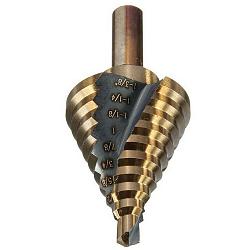I often need to drill on the center line of standard sized stock, both flat and round. Here is a set of tools that make the job easy and accurate.
If you are interested, please see
https://rick.sparber.org/CenteringPartsDrillpress.pdf
Your comments are welcome. All of us are smarter than any one of us.
Thanks,
Rick


 LinkBack URL
LinkBack URL About LinkBacks
About LinkBacks


 Reply With Quote
Reply With Quote







Bookmarks